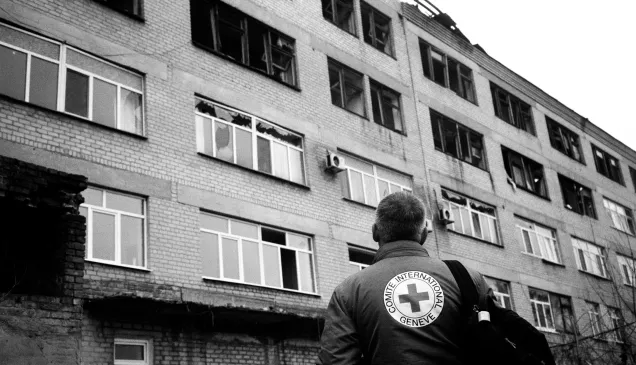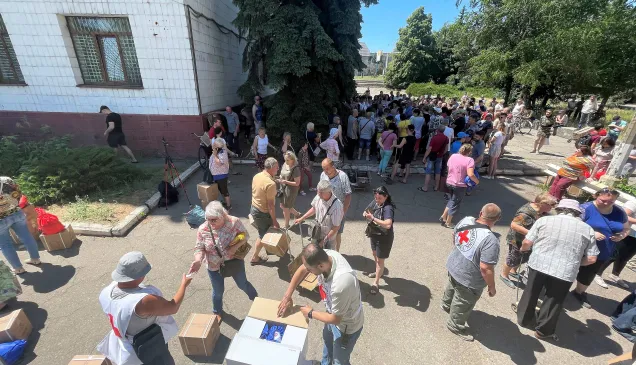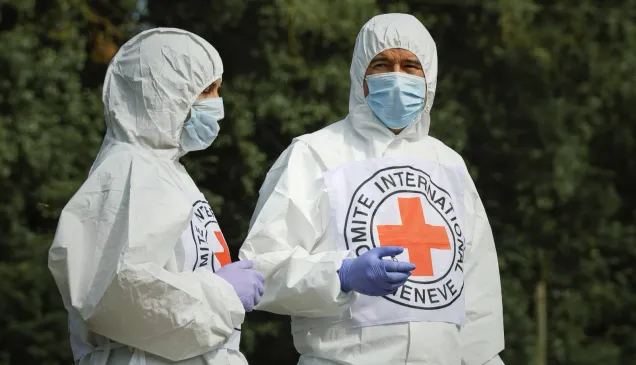Ukraine: Strikes on cities are upending lives
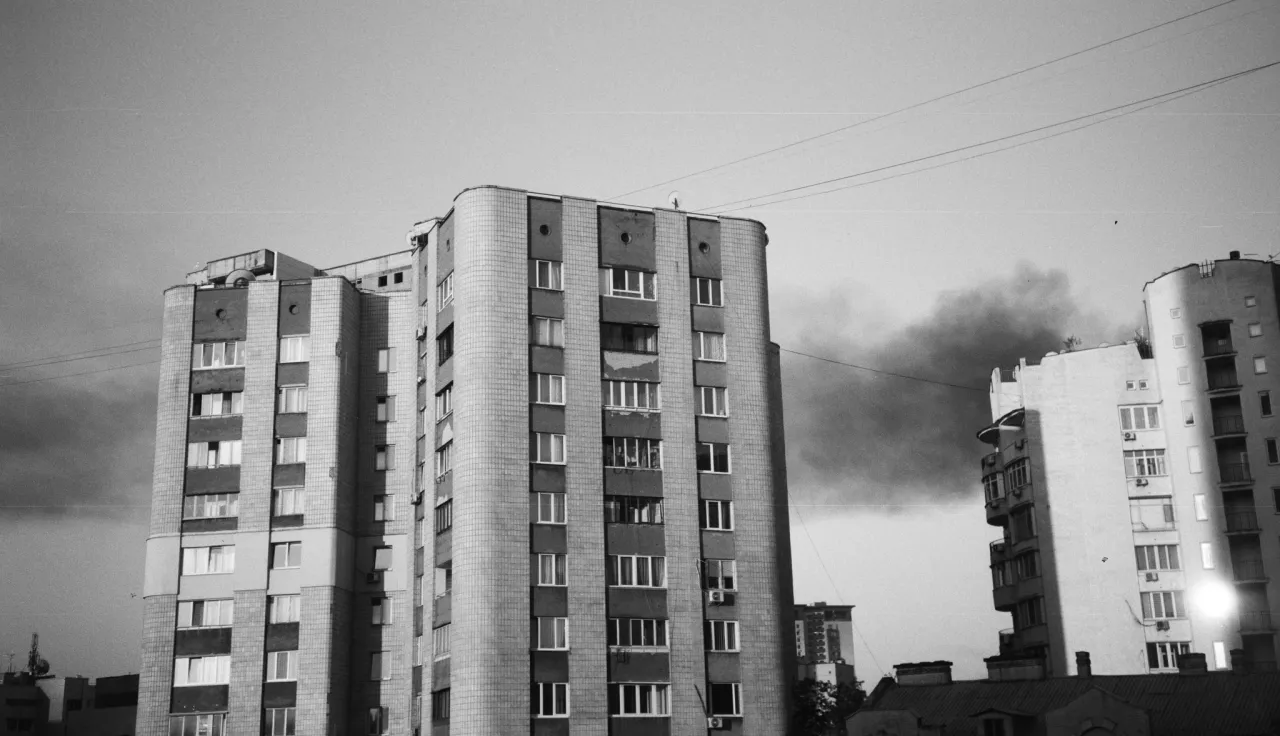
In the armed conflict between Russia and Ukraine, even people far from the frontlines live under the constant threat of being impacted by missile or drone strikes. All lives are affected, including those who help others.
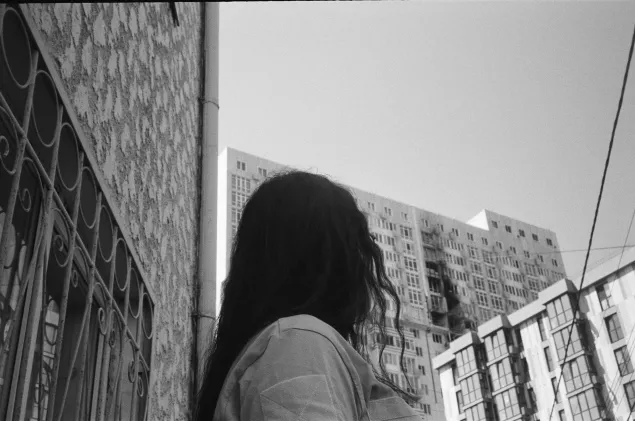
Viktoriia and the damage to her apartment block after a strike in Odesa, Ukraine.
Viktoriia
“When I hear the sound of an air raid siren, I become very tense,” says Viktoriia Karpenko.
“I struggle to breathe… In moments like these, you just cannot control your own body.”
Viktoriia speaks to us from outside her apartment block in Odesa, Ukraine. The tall white building bears a long black scar from the impact, explosion and fire caused by a drone that struck it earlier this year.
Viktoriia is a senior disaster management officer with the Ukrainian Red Cross Society (URCS). She works with the URCS emergency response teams, who can be among the first on the scene following a strike.
Her role is to make sure that physical resources – such as water, food, hygiene or quick-fix materials – make it from URCS warehouses to where they are needed. Strikes happen at all hours, meaning many sleepless nights.
When Viktoriia’s apartment block was struck, she was already in a shelter, having heard the sirens.
I could hear drones flying, and then, when the building was hit, I could feel it rock. I could hear someone scream ‘mum, mum’ – I don’t know if they were injured or scared.
Car alarms went off; dogs were barking. Viktoriia feared for her partner, and their cat, who were not in the shelter with her. After a long wait, he arrived – carrying their cat.
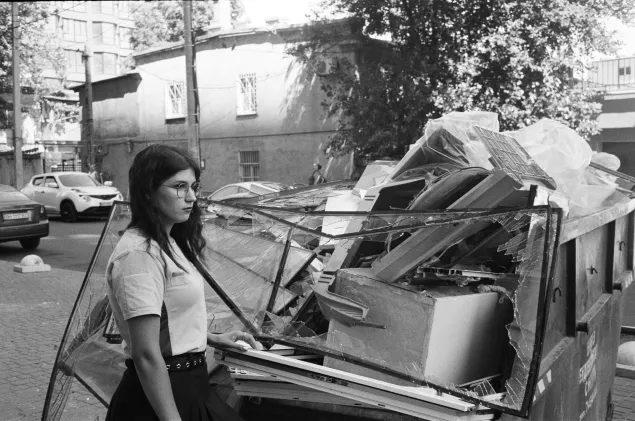
Viktoriia with broken window frames from her apartment, damaged in the strike.
When a siren sounds, the safest thing to do is always to seek shelter.
But when people need to drop what they’re doing and leave home or office to seek shelter in basements, metro stations or safe rooms, maybe multiple times, day or night, sometimes for hours, then that takes a toll.
The disruption to daily life can be exhausting.
During alarms, people scan social media on their phones, seeking information about the latest threat. But there is so much uncertainty – where a strike might happen, or when, and what impact it will have.
Even in cities far from the frontlines, the constant threat of strikes adds an extra layer of anxiety that hangs over everyone. Concern not just for oneself – but for friends and family – mean that this threat is felt by all.
Viktoriia is from Mykolaiv but was displaced after the armed conflict between Russia and Ukraine escalated. When not working with the URCS, she teaches Korean and Mandarin. She also watches anime and draws.
She remembers the URCS helped her evacuate from the city. Witnessing Red Cross volunteers at work inspired her journey.
“When our home was destroyed and we had to leave,” she says, “it was still an opportunity to keep on living and help others, which is something we have to do.”
Since the strike on their apartment, Viktoriia and her partner always go to the shelter during alarms together.
They take their cat with them.
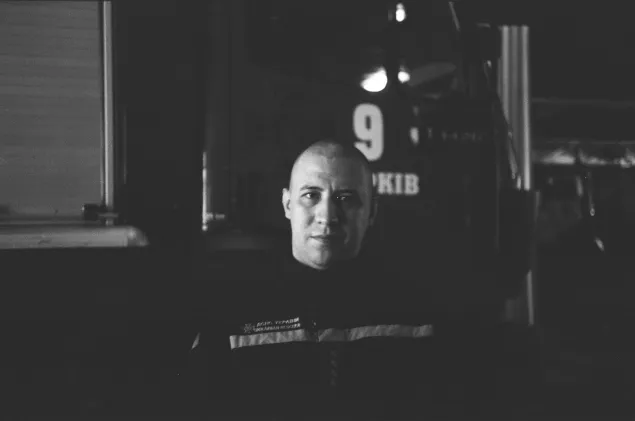
Serhii Bilous, at SESU headquarters in Kharkiv, Ukraine.
Serhii
Serhii Bilous has saved many lives.
He’s been doing so for 10 years, now working with the State Emergency Services of Ukraine (SESU) in Kharkiv.
“Being a rescuer is a calling from the heart,” he tells us, sitting in front of one of the red trucks used by SESU first responders to reach people in the immediate aftermath of a strike.
He recalls one rescue, last year, when a 12-story residential building was struck. The upper floors were destroyed and engulfed in fire.
From below, rescuers could see a woman trapped by flames on the 12th floor, the stairwells destroyed. A group of rescuers had to use climbing equipment to get onto the roof, secure ropes, then descend down to reach her.
It was Serhii who reached the woman, securing her in a special sling so that they could continue their descent together.
“The fire became more intense, and very hot flames began to pour out of the balcony, burning the woman… and me as well,” he says. “I was most afraid that the ropes would melt.”
He shouted to his colleagues on ladders and the lower floors to hose them down as they descended, so that the ropes would cool.
Making their way to a floor where the stairway was clear, they were able to exit the building, where the woman was examined by waiting ambulance crews and hospitalised.
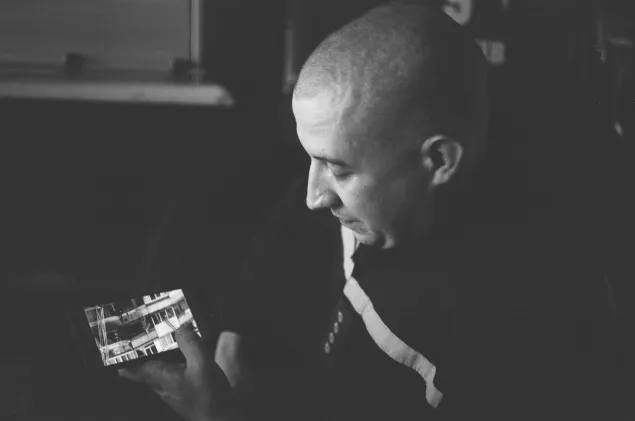
Serhii shows a video of the rescue at the 12-story apartment building in Kharkiv.
“I have told you about happy stories,” Serhii tells us. “But unfortunately, we also have sad stories.”
Serhii has lost colleagues. Sometimes there are people they can’t save. Rescues involving children are the hardest. “There was a situation when a child died in my arms,” Serhii says.
“Our families help us cope with this. We can talk to them. But at work, we have to keep a cool head.”
While the majority of casualties – killed and injured – in the armed conflict between Russia and Ukraine are soldiers on both sides of the frontline, Serhii’s work is testament to the ongoing toll on those back home.
When the job is done well, the fire is extinguished, people are saved. That’s what inspires us.
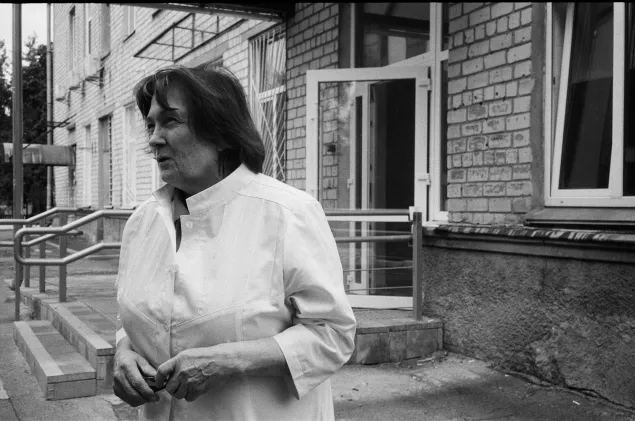
Olha Kovalenko, senior surgeon at the Burn Treatment Centre in Kyiv.
Olha
Olha Kovalenko thinks of the beaches in Odesa.
We had asked her how she coped with the stress of strikes on cities; her answer was about other people.
During air alerts, Odesa beaches are still crowded. People simply have no choice. They want to enjoy the sun, the sea – and remember what it was like in peacetime. People simply need a breath of fresh air.
Olha is a senior surgeon with more than 40 years of experience at the intensive care unit of the Burn Treatment Centre in Kyiv. The workload is immense; resources stretched; never enough hours in the day.
The majority of her patients are soldiers from the frontlines, though when there are strikes on Kyiv, she sometimes receives civilian casualties for treatment.
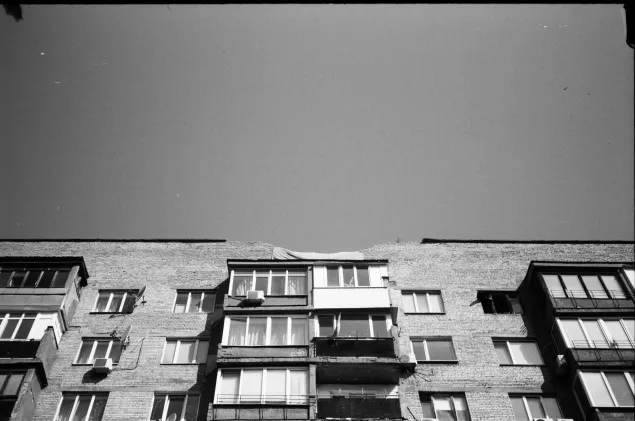
A residential block damaged by strikes in Kyiv.
“People are simply asleep at their homes,” she says. “When this horror happens, they jump up to see their apartments destroyed and on fire. Some manage to get out on their own.”
The sound of a drone approaching at night, humming then howling in arcs across the sky, or the flash and wall-shaking blast of a missile, are no longer remote experiences. Countless thousands are regular witness to them.
It’s the kind of ever-present threat that sees some parents make their children wear day clothes to bed – never sure if the family will need to get up and seek shelter in the night.
“One of our patients is a medical intern, a dentist,” Olha says. “He rushed outside. All his body was on fire. His neighbours put him out, but he still received severe burns.”
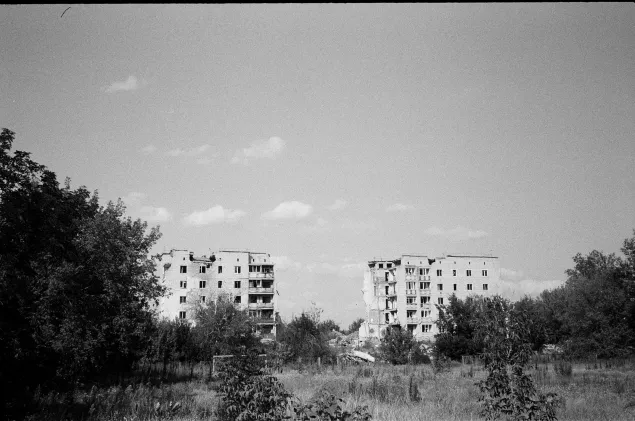
A building damaged by hostilities outside Izyum in Kharkiv Oblast, Ukraine.
She tells of how they recently treated a 70-year-old man with burns covering a quarter of his body, and of how they also treat first responders, injured while saving people trapped in burning buildings.
"We are under constant stress,” Olha says. “I live on the 15th floor and yesterday, during a strike, I felt the drones were very close… like little jet planes.”
For Olha, as for many, it is thoughts of family and future that help.
“What keeps me going is hope,” she says.
She is not alone in that.
Read more about our work in Ukraine
- Ukraine: Supporting families living with uncertainty
- Ukraine: DNA and Dignity for the Deceased
- ICRC’s Central Tracing Agency Bureau for the International Armed Conflict between the Russian Federation and Ukraine: Providing answers to families
- Russia–Ukraine international armed conflict: Your questions answered about the ICRC’s work
- Useful information for people affected by the international armed conflict between Russia and Ukraine

